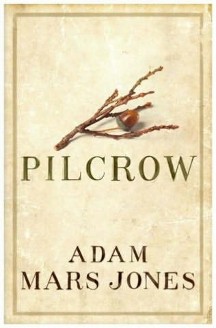Pilcrow (novel)
Pilcrow is a novel that intricately weaves the themes of identity, disability, and the quest for understanding oneself within the confines of a society that often overlooks the unconventional. Set against the backdrop of the mid-20th century, the narrative follows the life of its protagonist, John Cromer, from his early childhood through to his young adult years. The novel is notable for its detailed exploration of living with a chronic illness, as John battles with rheumatoid arthritis, which significantly impacts his mobility and independence. Through John's eyes, readers are invited into a world where the physical limitations imposed by society are as much a barrier as the physical limitations of his condition.
Plot Summary[edit | edit source]
The story begins with John's early years, highlighting the initial diagnosis of his condition and the subsequent effects on his family dynamics and educational opportunities. As John grows, so does his awareness of his difference from others, driving a deep curiosity about the world and a desire to carve out a place for himself within it. The narrative delves into John's experiences with education, both at home and in various institutions, showcasing the challenges faced by individuals with disabilities in accessing equal opportunities for learning and socialization.
Throughout the novel, the pilcrow symbol (¶) serves as a recurring motif, representing the beginnings and transitions in John's life. This symbol, often used to denote a new paragraph or section in writing, metaphorically underscores the new phases and shifts in perspective John experiences as he navigates the complexities of his condition and the societal attitudes towards it.
Themes[edit | edit source]
The novel addresses several key themes, including the nature of identity, the experience of living with a disability, and the human desire for connection and understanding. Through John's journey, the author explores how physical limitations and societal perceptions of disability can shape an individual's sense of self and their interactions with the world around them. The theme of identity is further complicated by John's introspective nature and his quest to understand his place in a world that often seems indifferent to his struggles.
Reception[edit | edit source]
Pilcrow has been praised for its insightful portrayal of disability, its rich character development, and its evocative depiction of the mid-20th century. Critics have noted the novel's ability to challenge readers' perceptions of normalcy and disability, urging a deeper understanding and empathy for the varied experiences of individuals living with chronic conditions. The novel's detailed and compassionate portrayal of John's life offers a nuanced exploration of the human condition, making it a significant contribution to contemporary literature.
See Also[edit | edit source]
Search WikiMD
Ad.Tired of being Overweight? Try W8MD's physician weight loss program.
Semaglutide (Ozempic / Wegovy and Tirzepatide (Mounjaro / Zepbound) available.
Advertise on WikiMD
|
WikiMD's Wellness Encyclopedia |
| Let Food Be Thy Medicine Medicine Thy Food - Hippocrates |
Translate this page: - East Asian
中文,
日本,
한국어,
South Asian
हिन्दी,
தமிழ்,
తెలుగు,
Urdu,
ಕನ್ನಡ,
Southeast Asian
Indonesian,
Vietnamese,
Thai,
မြန်မာဘာသာ,
বাংলা
European
español,
Deutsch,
français,
Greek,
português do Brasil,
polski,
română,
русский,
Nederlands,
norsk,
svenska,
suomi,
Italian
Middle Eastern & African
عربى,
Turkish,
Persian,
Hebrew,
Afrikaans,
isiZulu,
Kiswahili,
Other
Bulgarian,
Hungarian,
Czech,
Swedish,
മലയാളം,
मराठी,
ਪੰਜਾਬੀ,
ગુજરાતી,
Portuguese,
Ukrainian
WikiMD is not a substitute for professional medical advice. See full disclaimer.
Credits:Most images are courtesy of Wikimedia commons, and templates Wikipedia, licensed under CC BY SA or similar.
Contributors: Prab R. Tumpati, MD

